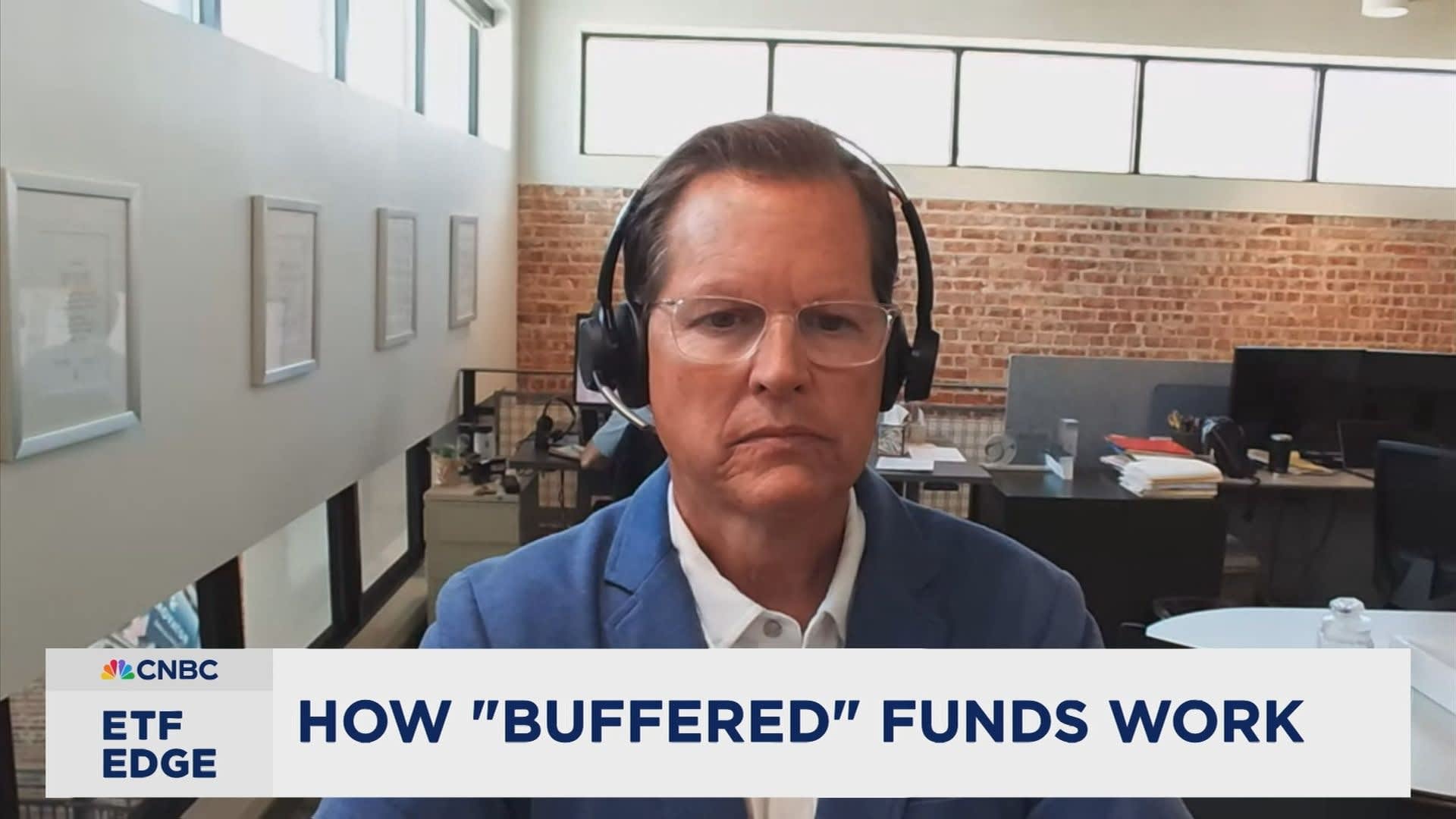
Investors may want to consider buffer ETFs to hedge the recent market volatility.
Bruce Bond, CEO of Innovator ETFs, sees an opportunity in buffer exchange-traded funds to offer some protection from the market’s downside.
“This [strategy] fits a group of people that are interested in getting exposure to the market, but not taking the full risk of the market,” Bond told CNBC’s “ETF Edge” on Wednesday.
Innovator ETFs issue monthly buffer ETFs. Their August ETF is under the ticker PAUG and offers 15% downside protection.
“If someone wants to invest in the S&P 500, they can get right in and do that,” Bond said. “They have 15% protection on the downside, and they have 12.8% opportunity on the upside.”
Bond recommends investors hold these ETFs until the end of the year, as the funds are constructed around one-year options within the portfolio.
“At the end of the year, the options are fully valued, and then we reset it for a following year,” Bond said. “Next August, they would fully value, then we would reset it for another year.”
Index Fund Advisors’ Mark Higgins expressed his skepticism of strategies like buffer ETFs that allow investors to hedge volatility.
“My concern would be a lot of investors are creating a very expensive solution for what is ultimately a simple problem,” the senior vice president at Index Fund Advisors said in the same segment. “They need to be more comfortable with the normal volatility of markets.”
Higgins believes there are cheaper solutions to navigate uncertainty in the markets — the cheapest being not looking at your portfolio too often and talking with your advisor before making any drastic moves out of surprise or fear.
“I think financial advisors that are doing their job can provide the calm,” Higgins said.
This article was originally published on CNBC

